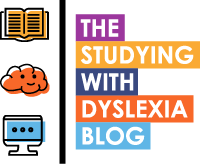Are schools missing a trick in ensuring high levels of attainment by not investing in dyslexia friendly resources and practises that could benefit ALL pupils, not just the dyslexic ones?
Last month I mentioned the British Dyslexia Association’s conference on good practises in the classroom in supporting dyslexic students.
Whilst it would appear that more and more parents and teachers are gaining a better awareness of how to support a dyslexic child through education, I was reminded recently of how schools are mostly still taking a ‘reactive approach’ to supporting dyslexic learners when a more pro-active approach could make more of a positive impact.
The sponsor of this article, Oaka Books, has recently published a download called “Why our dyslexic pupils must have dyslexia friendly resources”. In the article, Bambi Gardiner (author) , comments on how schools desperately need to invest in specially trained teachers, but whilst that is a great strategy and one that the British Dyslexia Association has been strongly lobbying for with the UK Government, it is something that will be a longer term strategy for change in the UK education system. So surely, something can be done now? And it can.
The Oaka publication states that there are more than 1,000,000 pupils in school who are experiencing dyslexia added to this there is another group of pupils who will also have challenges with language and literacy in class and those pupils are classed as EAL (English as an Additional Language), of which in primary education we are talking about 20% of the population and in secondary education 17%.
Free Download
Useful insights for parents & teachers.
So a good proportion of our student community in primary and secondary education will be struggling with reading.
In a previous blog article I wrote about how Bambi sought to provide dyslexia friendly resources to help her daughter. Just by changing the format of how information is presented on paper, Sophie was able to improve her ability to process information, remember it and pass exams.
In Bambi’s publication, I was quoted on how self-esteem the self-esteem of some children with dyslexia is affected as they are being expected to learn in a way that the education system dictates that often plays to the weaknesses of a dyslexic child. When studying seems like an uphill struggle six hours a day for potentially 14 years of one’s life, the effect is often one that erodes at self-belief. This results in not only difficulties with reading and writing but also engagement and who would blame a child who feels like school is something that makes them feel bad about themselves everyday if their engagement drops?
Bambi, makes a strong case for teachers to incorporate dyslexia friendly learning materials and strategies into their teaching. OFSTED judges schools by their ability to provided differentiated learning, so whilst this is not a new concept, it does require teachers and schools to adjust their way of working which can often be a slow process. Whilst of course, Oaka will make a case for this as their business provides a source of these dyslexia friendly learning resources, the reality is that there are many options that teachers can rely on to deliver a more dyslexic (and EAL) friendly approach to learning.




